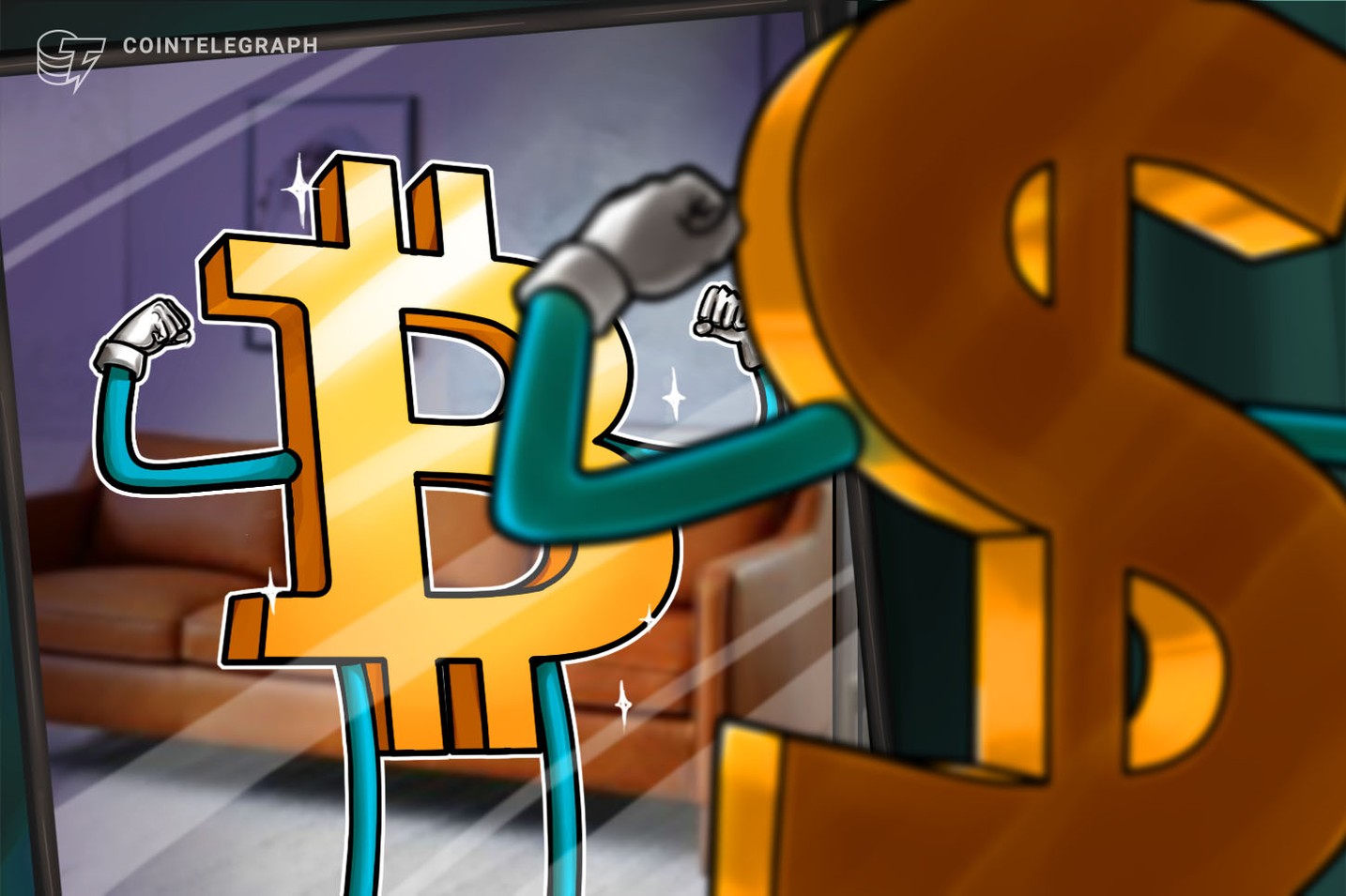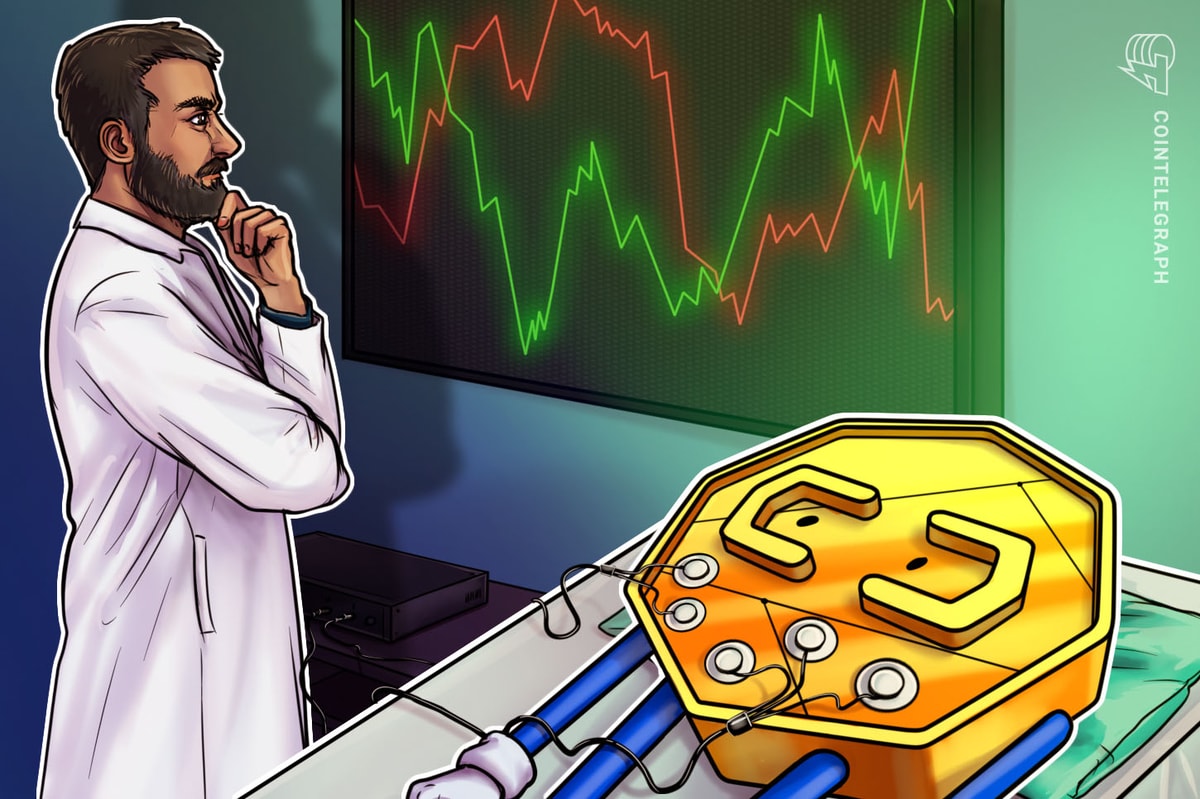Bitcoin (BTC) starts the week on a firm footing as bulls send BTC price to a new 10-month high weekly close.
After a relatively calm week, last-minute volatility is getting traders excited at the prospects of a repeat attack on $30,000 resistance — but a lot stands in the way.
In what is set to be a significant week of macroeconomic data releases, the Consumer Price Index (CPI) print for March is due April 12, along with fresh insights into Federal Reserve policy.
Add to that the Ethereum Shanghai upgrade and it’s a recipe for volatility. How will Bitcoin react?
Volatility correlations between the largest cryptocurrency and traditional risk assets are inverting, data shows, while sentiment data also suggests little appetite for sudden selling among the hodler base.
Cointelegraph takes a look at the status quo in the run-up to what promises to be a week that keeps market participants on their toes.
CPI headlines key macro data week
A familiar event leads the week’s macro calendar, with U.S. CPI data due for March.
The release, this time on April 12, traditionally accompanies heightened volatility in risk assets, making that date a key area to watch for “fakeouts” in crypto markets.
The Federal Reserve will further produce the minutes of its latest Federal Open Market Committee (FOMC) meeting, during which it opted to continue raising interest rates.
Key Events This Week:
1. March CPI inflation data on Wednesday
2. Fed minutes on Wednesday
3. March PPI inflation data on Thursday
4. Consumer sentiment data on Friday
5. Retail sales data on Friday
6. 4 Fed speakers this week
This week determines what the Fed does next.
— The Kobeissi Letter (@KobeissiLetter) April 9, 2023
The environment is thus somewhat complicated when it comes to CPI’s impact on asset performance. While traders want to see inflation receding faster than expected, the Fed itself remains hawkish, last month confirming that further interest rate hikes may be appropriate.
However, a divergence between the Fed and markets is equally evident, with sentiment beginning to show that the latter simply does not believe rate hikes will continue much longer.
According to CME Group’s FedWatch tool, next month’s FOMC meeting will likely end in a repeat 0.25% hike. Those odds are highly flexible and react immediately to any new macro data releases, CPI included.

For macroeconomic and stock market analyst James Choi, there is another side to the inflation story, one involving a traditional headwind for crypto: the U.S. dollar.
This week’s release will set dollar strength on a three-month freefall, he warned on April 10, paving the way for some potential further relief on risk assets.
“People seem to have no idea how the $USD $DXY will fall in the next 3 months,” he commented on a U.S. Dollar Index (DXY) chart originally shared in late 2022.
“And this massacre will begin with this week’s CPI report. Mark my words, mark them well…”

Others are eyeing Q1 bank earnings as a source of potential knee-jerk market reactions, among them Jim Bianco, president of macro analysis firm Bianco Research.
In part of a Twitter commentary, Bianco predicted that the earnings would be “bigger than CPI.“
Bitcoin price volatility on the up
If volatility is what traders want, they arguably already have it in abundance, data shows.
According to market data resource Kaiko, Bitcoin is on a diverging path from equities when it comes to volatility, increasing action while the Nasdaq cools.
The events of last month, centered around the unfolding U.S. banking crisis, were enough to send the “gap” between Bitcoin and Nasdaq 30-day rolling volatility to its highest levels in a year.

Bitcoin’s correlation with gold, Kaiko revealed last week, is now higher than with the S&P 500.

Kaiko added that Bitcoin’s inverse correlation to the U.S. dollar is also rapidly unwinding.
“Although BTC remains negatively correlated with the US Dollar, the correlation is now almost negligible, falling from -60% to -23% YTD,” part of Twitter commentary read at the weekend.

BTC price sets new 10-month high weekly close
Bitcoin offered a late surprise into the April 9 weekly close, with BTC/USD making last-minute gains to seal the candle at just above $28,300 on Bitstamp, data from Cointelegraph Markets Pro and TradingView shows.

This is impressive in itself, marking fresh ten-month highs for weekly closes as bears are continually denied a return to lower levels.
“Bitcoin still holding the lower area of support, and still following the path,” Michaël van de Poppe, founder and CEO of trading firm Eight, wrote as part of his latest analysis.
“Everyone wants to long $25K, but I think we won’t be getting it. No clear bearish divergences either on higher timeframes. Retest of $28.6K & most likely breakout to $30K+.”

During the close, BTC/USD managed to hit local highs of $28,540 before returning to consolidate below the closing level.
Van de Poppe remains optimistic about the short-term prospects.
“Bitcoin consolidated at support and runs to $28,500. Another test of $28,600-29,000 and we’ll most likely breakout significantly,” he continued.
“More importantly; confidence comes back in the markets then, so you’ll see more Altcoins starting to break out.”
Related: Crypto winter can take a toll on hodlers’ mental health
In his own appraisal of longer-term market strength, popular trader and analyst Rekt Capital described Bitcoin as “very well positioned” to make further gains.
#BTC is very well-positioned for mid- to long-term upside
It would be a shame to miss out on the exponential post $BTC Halving gains#Crypto #Bitcoin pic.twitter.com/FE1j3nCTmN
— Rekt Capital (@rektcapital) April 9, 2023
When it comes to price action in 2023 so far, however, he remains conservative, noting the ongoing potential for BTC/USD to form a “double top” structure and return toward its yearly open.
“Still unclear whether BTC is forming a Double Top here,” he summarized alongside an explanatory daily chart.
“Either side of the Double Top formation is approximately equal, though this more recent part is becoming a bit longer. If this second part becomes even longer, it could distort the pattern altogether.”

Ethereum Shanghai upgrade looms
As Bitcoin market dominance sees a return to form, BTC may see an internal source of friction this week as Ethereum prepares to undergo its Shanghai hard fork.

Cointelegraph has extensively reported on the event, which will unlock — and open up for sale — around $2 billion in Ether (ETH).
Analysts are classically divided over how intense the resulting sell-side pressure might be. Some soberer takes argue that there will be few incentives for holders to exit the market.
“For those looking to ‘sell the news’ after the Shanghai upgrade, staked ETH will take around 1 year+ to be completely unlocked, it will be on a first come first served basis,” analytics account The Modern Investor summarized on Twitter.
“Those who started in 2021 will be released first. Caution: You’ll just be selling your ETH to whales.“
While ETH/USD recently hit its highest levels since August, attempting to snatch $2,000, ETH/BTC is struggling to lift off from ten-month lows.

“Rejected,“ popular trader Cheds reacted to the latest events on the ETH/BTC daily chart.
Sustainable greed?
Despite crypto market sentiment being at its most “greedy” since the BTC/USD all-time highs of November 2021, there are some encouraging signals from hodlers.
Related: Bitcoin traders expect ‘big move’ next as BTC price flatlines at $28K
These come courtesy of research firm Santiment, which at the weekend noted an ongoing trend that echoes hodler action from earlier that year as Bitcoin headed into unknown price territory.
“There is a rising rate of Bitcoin hodlers as traders seem to have become increasingly content in keeping their bags unmoved for the long-term,” it stated.
“We saw a similar trend from January, 2021 through April, 2021 when $BTC rose above $64k for the first time.“

During Q1 2021, crypto market “greed” was much more intense, with the Crypto Fear & Greed Index spending much of the time near its maximum levels — traditionally a warning that a correction is due.

The views, thoughts and opinions expressed here are the authors’ alone and do not necessarily reflect or represent the views and opinions of Cointelegraph.



